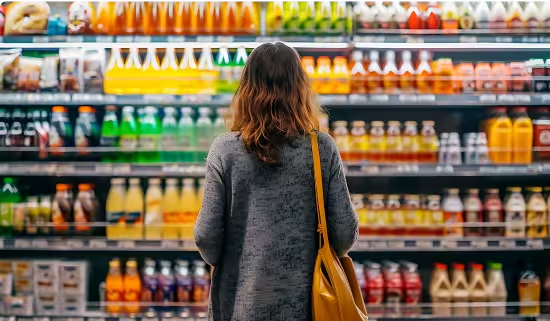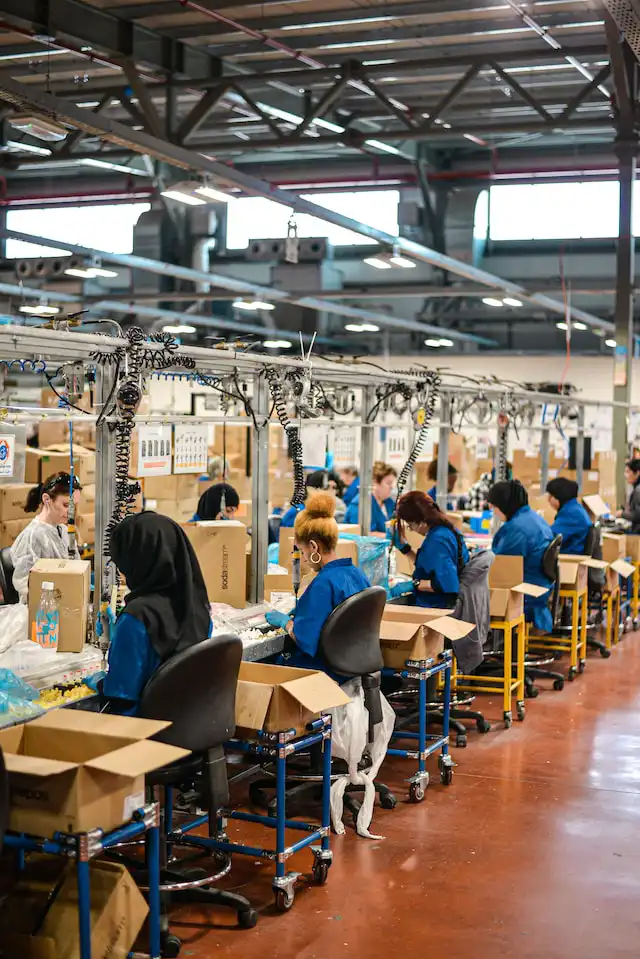
Malaysia Quick Commerce Market Outlook to 2026F
Driven by growing technological adoption and infrastructure development
Region:Asia
Author(s):Aditya Mishra
Product Code:KR1243
November 2022
128
About the Report
The report titled publication “Malaysia Quick Commerce Market Outlook to 2026F- Driven by growing technological adoption and infrastructure development by Ken Research provides a comprehensive analysis of the potential of Quick Commerce market in Malaysia. The report also covers Malaysia Country overview and Malaysia quick commerce market Overview, Malaysia Quick Commerce market size; Malaysia Quick Commerce market segmentation by B2B/B2C & C2C, by Region, by On-Demand Segment; Malaysia On-Demand Grocery Delivery market segmentation by Region, by Average Delivery Time Taken, by Product Category, by Gender, by Age Group, by Frequency of Ordering; Malaysia On-Demand Food Delivery Market segmentation by Region, by Average Delivery Time Taken, by Gender, by Age Group, by Average Order Value, by Cuisine Type, by Frequency of Ordering; Malaysia On-Demand Last mile Delivery market segmentation by B2B/B2C & C2C, by Region, by Average Delivery Time Taken, by B2C End User; Trends, Genesis, growth journey, challenges, Technological trends; SWOT analysis; Government Policies, COVID-19 Impact, Associations, Customer Analysis and Competition Analysis. The report concludes with future market projections & Outlook and analyst recommendations.

Malaysia Quick Commerce Market Overview:
The Malaysia Quick Commerce market is at a growing stage, with ~15-20 players competing in the market, and has witnessed a significant competition in terms of emergence of various companies and is expected to grow with a CAGR of 6.0% between 2022P and 2027F, mainly because of the high internet penetration, emergence of dual income families, change in the consumer behavior post pandemic, increasing interest towards seamless transaction, unplanned and last-minute ordering and busy lifestyle.
Malaysia Quick Commerce Market Segmentations:
Malaysia Quick Commerce Market Segmentation on Demand Grocery:
By Products Category: Packaged food and beverages amount for almost half of the orders were placed on on-demand grocery delivery platform.
By Business Model: In 2022P, over 5 million quick commerce orders were made through Dark stores and remaining orders were fulfilled via the marketplace model
The major player in Malaysia – Pandamart, operates most of the dark stores in the country and other players have resorted to sticking with Marketplace model.
By Customer's Gender: Females make a slightly higher proportion of online grocery delivery purchases and the age group 25-34 has the highest share in total number of orders.
By Delivery Time: Majority of the orders placed on on-demand grocery delivery platform are delivered in less than 45 minutes, whereas around 10% of the orders are delivered in 45-120 minutes.
By Order Value: The 50-100 RM Average Order Value category is the most dominant amongst all on demand grocery delivery orders with 43.2% share and roughly 4.4 million orders in year 2022P.
By Customer's Age: Malaysians of age between 25-44 years are the major users of on-demand grocery platforms because of convenience, propensity to pay and quick delivery time.
Malaysia Quick Commerce Market Segmentation on Demand Logistics
By B2B/B2C & C2C: B2B Segments is dominating the last mile logistics market because these services are accessed by mostly households.
By B2C End User: Grocery and Flowers are the top most end users of last mile delivery service contributing more than 50% share together.
By Regions: Urban Areas accounted large number of orders as compared to Tier 2 & Rural Areas.
By Average Delivery time taken: The rise in online orders has increased the demand for Last Mile delivery. In 2022P, majority of the last mile orders delivered between (1 - 2 hours).
Malaysia Quick Commerce Market Segmentation on Demand Food Delivery:
By Average Delivery Period: Majority of the orders delivered within 30 minutes, in 2022P. Whereas, a small percentage share of orders were delivered above 45 minutes.
By Cuisine type: Fast food remained the most popular cuisine category in Malaysia in terms of numbers of orders placed and delivered in 2022P.
Comparative Landscape in Malaysia Quick Commerce Market:
Malaysia Quick Commerce Market is a moderately fragmented market which is still at a growing stage. High internet penetration is the prime factor for the growth of the market. Adoption of new technologies, impact of Covid-19, emergence of new players, and government initiatives are some other factors responsible for the growth of the quick commerce market in Malaysia. The top quick commerce players as of 2021 in Malaysia are, Foodpanda, Grab, Oddle and more.
Malaysia Quick Commerce Market Outlook and Projections:
Malaysia Quick Commerce Market is expected to grow with of CAGR of 6.0%, between 2022P-2027F, some of the major determinants for the surging growth in the coming years is the changing lifestyle of the people, discounts offered by the companies, convenience, last mile-delivery, availability of variety of brands and Government initiatives. Furthermore, Companies are also adopting new technologies like GPS monitored robots, drones, inbuilt RFID, IoT Telematics that will be used for tracking Inventory and Simplified E-banking system which will contribute in the growth of the quick commerce market in Malaysia.
Key Topics Covered in the Report
- Country Overview Malaysia
- Ecosystem of Major players in the Malaysian Quick Commerce Market, 2022
- Business Cycle and Genesis of Malaysia Quick Commerce Market
- The Rise of Rapid Delivery (Quick Commerce)
- Customer Journey: Traditional E-Commerce Vs On-Demand Logistics
- E-commerce statistics in Malaysia as compared to other regions
- E-commerce penetration in Malaysia
- E-commerce trends in Malaysian states
- E-commerce vs Quick Commerce
- Business Model Canvas of Quick Commerce businesses
- On Demand Food Delivery Market in Malaysia
- Market Segmentation for On Demand Food Delivery Market in Malaysia
- Competition Analysis for On Demand Food Delivery Market in Malaysia
- Future Forecast for On Demand Food Delivery Market in Malaysia
- On Demand Grocery Delivery Market in Malaysia
- Market Segmentation for On Demand Grocery Delivery Market in Malaysia
- Competition Analysis for On Demand Grocery Delivery Market in Malaysia
- Future Forecast for On Demand Grocery Delivery Market in Malaysia
- On Demand Last Mile Logistics Market in Malaysia
- Market Segmentation for On Demand Last Mile Logistics Market in Malaysia
- Competition Analysis for On Demand Last Mile Logistics Market in Malaysia
- Future Forecast for On Demand Last Mile Logistics Market in Malaysia
- Industry Analysis
- Regulations: Product Registration and Certification
- Challenges in Market
- Growth Drivers of the Malaysian Quick Commerce Market
- Growth driven by Covid-19 pandemic
- Malaysian Government’s National E-commerce Strategic Roadmap
- Sub-segments of the Malaysian Government’s Digital Free Zone
- Diversification Opportunity to Other Categories
- Technologies to Leverage in the Malaysian Quick Commerce Market
- Strategies followed by Food Delivery Player in SEA’s
- New Technologies
Products
Key Target Audience
Quick Commerce Players
Ecommerce Companies
E-grocery Companies
Logistics Companies
Cold Chain Companies
Investors & Venture Capitalists
Time Period Captured in the Report:
Historical Period: 2017-2022P
Forecast Period: 2022P-2027F
Companies
Key Segments Covered in the Report
Malaysia Quick Commerce Market Segmentation on Demand Grocery
By Products Category
Beauty & Personal care
Packaged Food & Beverages
Staples
Fruits & Vegetables
Others
By Region
Metro & Tier I
Tier II & below
By Business Model
Dark Store Model
Marketplace Model
By Customer's Gender
Male
Female
By Delivery Time
0-30 mins
30-45 mins
45- 1 hour
1-2 hours
By Order Value
0-50
50-100
100-200
200-1000
By Customer's Age
16-24
25-34
35-44
45-54
55+
Malaysia Quick Commerce Market Segmentation on Demand Logistics
By B2B/B2C & C2C
B2B
B2C
C2C
By B2C End User
Grocery
Flowers
Shoes
Fresh Fruits & Vegetables
Others
By Regions
Urban Areas
Tier 2 and Rural Areas
By Average Delivery time taken
0-30 mins
30-45 mins
45 mins - 1 hr
1 hr - 2hr
Malaysia Quick Commerce Market Segmentation on Demand Food Delivery
By Region
Urban Areas
Tier 2, 3, Rural Areas
By Average Delivery Period
Under 30 Minutes
30-45 Minutes
45-60 Minutes
By Gender
Male
Female
By Age Group
18-24
25-34
35-44
45 above
By Frequency of ordering
Everyday
2-3 times a week
once a week
every 2 weeks
once a month
once every 6 months
once a year
less than once a year
By Cuisine type
Fast Food
Malay
Beverages
Chinese
Others
Companies Covered:
Food Panda
GrabFood
Oddle
Quicksent
Airasia
Pandamart
GrabMart
Happyfresh
Lala Move
Borzo
GrabExpress
Pickupp
Table of Contents
1. Executive Summary
1.1 Executive Summary - Malaysia Quick Commerce Market
2. Country Overview Malaysia
2.1 Malaysia Country Profile
2.2 State wise income and expenditure pattern
2.3 State wise population and income growth
2.4 Digital Economy in Malaysia
3. Market Overview of Quick Commerce Industry in Malaysia
3.1 Ecosystem of Major players in the Malaysian Quick Commerce Market, 2022
3.2 Business Cycle and Genesis of Malaysia Quick Commerce Market
3.3 The Rise of Rapid Delivery (Quick Commerce)
3.4 Customer Journey: Traditional E-Commerce VS On-Demand Logistics
3.5 E-commerce statistics in Malaysia as compared to other regions
3.6 E-commerce penetration in Malaysia
3.7 State-wise e-commerce penetration in Malaysia
3.8 E-commerce penetration in Malaysia based on household income
3.9 E-commerce penetration in Malaysia – Key Insights
3.10 E-commerce trends in Malaysian states
3.11 Business Models
3.12 E-commerce vs Quick Commerce
3.13 Business Model Canvas of Quick Commerce businesses
4. On Demand Food Delivery Market in Malaysia
4.1 Business Cycle and Genesis of Malaysia On-Demand Food Delivery Market
4.2 Timeline of Malaysia On-Demand Food Delivery Market
4.3 Consumer Behavior and Analysis
4.4 Consumers Desires and Emerging Implications in Malaysia on Demand Food Delivery Market
4.5 Consumer Behavior Lifecycle in Malaysia On-Demand Food Delivery Market
4.6 Customer Journey of On Demand Food Order
4.7 Business Model
4.8 Business Model Canvas of On-Demand Food Delivery Platform
4.9 Economics of Food Delivery Order
4.10 Order and Delivery Model for Food Delivery
4.11 Market Segmentation for On Demand Food Delivery Market in Malaysia
4.12 Malaysia On-Demand Food Delivery Market (GMV, Number of Orders and Average Order Value), 2017-2021
4.13 Malaysia On-Demand Food Delivery Market Segmentation by Average Delivery Period, 2022P
4.14 Malaysia On-Demand Food Delivery Market Segmentation by Gender and By Age Group, 2022P
4.15 Malaysia On-Demand Food Delivery Market Segmentation by Cuisine Type and By Frequency of Ordering, 2022P
4.16 Competition Analysis for On Demand Food Delivery Market in Malaysia
4.17 Market Share of Major on Demand Food Delivery Players in Malaysia, 2022P
4.18 Strengths and Weaknesses of Major Players
4.19 Cross Comparison of On Demand Food Delivery Players in Malaysia
4.20 Future Forecast for On Demand Food Delivery Market in Malaysia
4.21 Malaysia On-Demand Food Delivery Market (GMV, Number of Orders and Average Order Value), 2022P-2027F
4.22 Malaysia On-Demand Food Delivery Market Segmentation by Average Delivery Period and By Cuisine type, 2027F
4.23 Malaysia On-Demand Food Delivery Market Segmentation by Gender and By Age Group, 2027F
4.24 Potential for Food Tech Players to Use Data Analytics
5. On Demand Grocery Delivery Market in Malaysia
5.1 Business Model
5.2 Business Model Canvas of On-Demand Grocery Delivery Platform
5.3 On-demand Grocery Platform Revenue Model
5.4 Marketplace model followed by on-demand grocery companies
5.5 Companies Offering Large Product Assortment & Taking Less Time to Deliver are Perceived as Leaders
5.6 Consumer Behavior and Analysis
5.7 On-Demand Food Delivery Market Customer Analysis
5.8 Market Segmentation for On Demand Grocery Delivery Market in Malaysia
5.9 Malaysia On-Demand Grocery Delivery Market (GMV, Number of Orders and Average Order Value), 2020-2021
5.10 Market Segmentation by average delivery time and product category, 2022P
5.11 Market Segmentation by Average Order Value, 2022P
5.12 Malaysia On-Demand Grocery Delivery Market Segmentation by Gender and By Age Group, 2022P
5.13 Market Segmentation by Business Model of Online Grocery Delivery Company, 2022P
5.14 Competition Analysis for On Demand Grocery Delivery Market in Malaysia
5.15 Market Share of Major on Demand Food Delivery Players in Malaysia, 2022P
5.16 Strength and weakness of Major on-demand grocery delivery companies
5.17 Cross Comparison for major On-demand grocery delivery companies
5.18 Future Forecast for On Demand Grocery Delivery Market in Malaysia
5.19 Malaysia on Demand Grocery Delivery Future Market Size, 2022P-2027F
5.20 Market Segmentation by average delivery time and product category, 2027F
5.21 Future Outlook – CAGR for Major Product Categories
5.22 Market Segmentation basis Average Order Value, 2027F
5.23 Malaysia On-Demand Grocery Delivery Market Future Segmentation by Gender and By Age Group, 2027F
5.24 Market Segmentation by Business Model of Online Grocery Delivery Company, 2027F
6. On Demand Last Mile Logistics Market in Malaysia
6.1 Business Cycle and Genesis of Malaysia On-Demand Last Mile Logistics Market
6.2 Timeline of Philippines On-Demand Last Mile Logistics Market
6.3 Business Model
6.4 Revenue Model of Philippines Last Mile Delivery Market
6.5 On-Demand Last Mile Delivery Customer Analysis
6.6 Business Model Canvas of On-Demand Last Mile logistics Platform
6.7 Market Segmentation for On Demand Last Mile Logistics Market in Malaysia
6.8 Malaysia On-Demand Last Mile Logistics Market (Number of Orders), 2020-2022P
6.9 Malaysia On-Demand Last Mile Logistics Market Segmentation by Region, 2022P
6.10 Malaysia On-Demand Last Mile Logistics Market Segmentation by B2B, B2C and C2C and By B2C End Users, 2022P
6.11 Malaysia On-Demand Last Mile Logistics Market Segmentation by Average Delivery time taken, 2022P
6.12 Competition Analysis for On Demand Last Mile Logistics Market in Malaysia
6.13 Market Share of Major on Demand Last Mile Logistics Players in Malaysia, 2022P
6.14 Cross Comparison of On Demand Last Mile Logistics Players in Malaysia
6.15 Future Forecast for On Demand Last Mile Logistics Market in Malaysia
6.16 Malaysia On-Demand Last Mile Logistics Market (Number of Orders), 2022P-2027F
6.17 Malaysia On-Demand Last Mile Logistics Market Segmentation by Region, 2027F
6.18 Malaysia On-Demand Last Mile Logistics Market Segmentation by B2B, B2C and C2C and By B2C End Users, 2027F
6.19 Malaysia On-Demand Last Mile Logistics Market Segmentation by Average Delivery time taken, 2027F
6.20 Grocery Retailers Optimizing Last Mile Delivery
7. Industry Analysis
7.1 Increasing merchant adoption of Quick Commerce
7.2 Cross Border Transactions in Malaysia
7.3 Industry Regulations
7.4 Regulations: Product Registration
7.5 Regulations: Product Certification
7.6 Challenges in Market
7.7 Barriers to Entry
7.8 Seasonality
8. Growth Drivers
8.1 Recent Growth Drivers
8.2 Growth Drivers of the Malaysian Quick Commerce Market
8.3 Growth driven by Covid-19 pandemic
8.4 Government Initiatives
8.5 Malaysian Government’s National E-commerce Strategic Roadmap
8.6 Malaysian Government’s Digital Free Zone
8.7 Sub-segments of the Malaysian Government’s Digital Free Zone
9. End User Analysis
9.1 Customer Profile
9.2 Malaysian Values
9.3 What influences decision making
9.4 Consumer expenditure trends
9.5 Household income in Malaysia by ethnicity
9.6 Purchase pattern for physical shopping among Malaysian consumers
9.7 Expenditure comparison for Quick Commerce vs Physical stores
9.8 Preferred payment method for online shopping
9.9 Increasing adoption of e-Wallet payments in Malaysia
10. Analyst Recommendations
10.1 Diversification Opportunity to Other Categories
10.2 Technologies to Leverage in the Malaysian Quick Commerce Market
10.3 Strategies followed by Food Delivery Player in SEA’s
10.4 Regions to Target
10.5 Decision parameters for regions to target
10.6 Regions to target during market entry
10.7 How to increase basket size of quick commerce orders
10.8 New Technologies
10.9 Transitioning to Quick Commerce
11. Research Methodology
11.1 Market Definitions and Assumptions
11.2 Abbreviations
11.3 Market Sizing Approach
11.4 Consolidated Research Approach
11.5 Sample Sizing Inclusion
11.6 Limitations and Future Conclusion
Disclaimer
Contact Us
Why Buy From Us?

What makes us stand out is that our consultants follows Robust, Refine and Result (RRR) methodology. i.e. Robust for clear definitions, approaches and sanity checking, Refine for differentiating respondents facts and opinions and Result for presenting data with story

We have set a benchmark in the industry by offering our clients with syndicated and customized market research reports featuring coverage of entire market as well as meticulous research and analyst insights.

While we don't replace traditional research, we flip the method upside down. Our dual approach of Top Bottom & Bottom Top ensures quality deliverable by not just verifying company fundamentals but also looking at the sector and macroeconomic factors.

With one step in the future, our research team constantly tries to show you the bigger picture. We help with some of the tough questions you may encounter along the way: How is the industry positioned? Best marketing channel? KPI's of competitors? By aligning every element, we help maximize success.

Our report gives you instant access to the answers and sources that other companies might choose to hide. We elaborate each steps of research methodology we have used and showcase you the sample size to earn your trust.

If you need any support, we are here! We pride ourselves on universe strength, data quality, and quick, friendly, and professional service.















